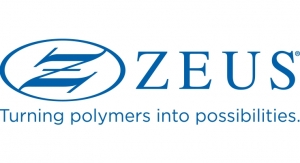Michael Barbella, Managing Editor11.20.20
After losing four babies, Jamie McDonald was overjoyed to learn she was expecting twins. But her happiness abruptly ended when she gave birth to the tiny pair at 24 weeks. “We felt pretty positive we were never going to bring them home,” she recounted to “The Doctors” syndicated talk show.
McDonald’s babies—Everly and Maverick—weighed 1.9 pounds at birth and both were diagnosed with patent ductus arteriosus (PDA), a potentially life-threatening congenital heart condition triggered by an opening between two cardiac blood vessels. The sixth most common defect, PDA occurs in 5-10 percent of all children born with congenital heart disease, and is twice as likely to occur in girls than boys.
The condition is treatable with therapy, minimally-invasive catheter-based interventions, and minimally-invasive surgical solutions. Doctors chose the latter option for Everly and Maverick, implanting a pea-sized wire mesh device between their pulmonary arteries and aortas to prevent blood from mixing and straining their tiny hearts and lungs.
The device, made by Abbott Laboratories, is inserted through a small leg incision and guided to the afflicted cardiac vessels. Manufacturing such a diminutive object most certainly entailed micromolding, a type of injection molding that produces extremely tiny parts, often with micron tolerances. The process uses special equipment that can produce intricate designs and details.
Medical Product Outsourcing’s October feature, “Little Big Parts,” addresses the latest trends and challenges shaping the fast-growing medical micromolding market. Jared Cicio, production manager; John Clark, operations manager; Patrick Haney, R&D engineer; Gary Hulecki, executive vice president; Kyle Kolb, tooling supervisor; Lindsay Mann, sales/marketing director; and Sherry Simonson, account manager at MTD Micro Molding, were among the various experts interviewed for the story. Their full input is provided in the following Q&A.
Michael Barbella: What are the latest innovations in micromolding technology?
Patrick Haney: Part features are getting smaller—wall thicknesses especially. Knowledge and equipment allows us to be successful in creating these part features—it comes down to strategy with building the tool and optimizing molding parameters. Knowledge from experience allows us to push the envelope even further than we could even just a couple years ago.
Materials knowledge at MTD has advanced quite a bit. We conduct in depth studies for material behavior that are unique to micromolding and can identify and study various phenomena that we uncover. By weighing study results and relying on material engineering knowledge, applying to current and future projects. It is a combination of acquired knowledge and internally researching things that we don’t understand but want to.
Jared Cicio: I wouldn’t say there is a lot of new innovation but improvements to existing technology has come a long way. This is in both tooling and molding:
Barbella: What market forces are fueling the need for micromolding technology and services?
Sherry Simonson: Bioabsorbable anchors/staples and drug delivery devices.
Gary Hulecki: Insulin pumps for diabetes care have made great strides in miniaturization—they used to be the size of a fanny pack, then decreased in size to fit in a pocket, and now they can fit discretely on your body as a wearable and be the size of a quarter.
Lindsay Mann: The medical plastics industry is an ever-growing one. Minimally invasive surgeries are preferred for the benefit of quicker recovery times, fewer post-op complications, and better patient outcomes. These procedures require high-tech devices that can be comprised of tiny, complex micro plastic parts. That’s where we come in. Medical micro injection molding is our specialty.
Barbella: How is the need for smaller, more complex medical devices/components challenging micromolding suppliers and providers?
Haney: There are two categories: 1. Mindset 2. Equipment capabilities.
Mindset—With parts and features continuing to get smaller, more complex or both—the high demands of medical device industry will not go away. There is more pressure for molders to provide evidence that there is high confidence that a project can be completed successfully and on time. To continue to build that confidence, MTD needs to stay at the tip of the spear by ensuring we take steps now to anticipate the intricacies of how this technology will develop. Even though we don’t know what is coming next in the future, we have a department that is focused on R&D efforts to ensure we are ready.
Equipment capabilities—We have the ability to optimize our customer’s designs by making micro design changes to maximize the strength or optimize the functionality of a component.
If we solved every problem we faced in a reactionary fashion, we would not be able to stay ahead of the curve. Because we solve problems theoretically, we have data to support the solution and we can use that data to extrapolate to solve problems in the future.
Cicio: The need for smaller more complex medical devices has made it challenging for micromolders for many reasons. The most difficult challenge we come across with smaller and more complex parts is that as the parts get smaller, the dimensional tolerances do too. These requirements paired with the need for very thin walls, which require faster injection speeds, create a near impossible situation that takes a very precisely made mold and a high level of processing knowledge to perfect.
Another major challenge with smaller, highly precise medical parts is handling. We can’t just drop a part out of the mold into a bucket. We design and build custom end of arm tools (EOAT) in house for our robotics that precisely extract the parts and runners from the molds and carefully place them into a collection system. We are extracting parts from molds with robotics and loading them into special trays, bags or gel packs that will be shipped directly to customers. This requires lots of planning and forecasting to ensure proper automation is in place to keep up with customer demand.
One last thing that I see as a challenge with more complex medical device designs is assembly. Most devices have multiple components that fit together to create the device. As devices get smaller and smaller, handling these components gets increasingly more difficult. Assembly steps need to be performed under a microscope using tweezers and with such tight tolerances, there is no room for error. This makes finding the right people that are qualified to do this work crucial, but challenging. It takes a lot of manual dexterity to be able to assemble a device under a microscope.
Barbella: What factors must be taken into consideration in designing tooling for micromolded parts?
John Clark: The cutting tools available to create the geometry is a big factor. If the cutting tool you need doesn’t exist, splitting the core or cavity into smaller pieces gives the ability to cut the mold to be able to produce the most model like molded part.
Kyle Kolb: Size and space constraints
Barbella: Should micromolding tooling design be outsourced? Why or why not?
Hulecki: The number of shops that have the unique capability to design micromolds is limited. Sending micro mold design work to mold designers who design macro tools primarily is problematic. Having tooling and processing constantly collaborate throughout the mold design process to get the design right the first time is imperative to a successful project. Micro molding projects without inhouse tooling support often leads to longer lead times. Also, iteration processes take much longer when tooling is managed off site. This could work in macro world, but not well in the micro world.
Kolb: To be successful, there needs to be an intimate knowledge of the full manufacturing picture—tool makers abilities, machining capabilities and capacities as well as knowledge of our injection molding machines and automation capabilities.
Barbella: What material advancements are currently impacting micromolding capabilities?
Haney: For the most part, the materials have stayed the same, but the micromolding has become more challenging and the engineering that goes into making these devices has become more complicated. Polymerization and synthesizing of materials tend to stay the same because they are catered to a macro world. We have more conversations about lot-to-lot variation than a macro molder would because miniscule changes can significantly affect our results.
There are no “micro” injection molding grade materials. The way this impacts micromolding is we have to make our process as robust as possible to anticipate any problems we come across.
We have seen interesting material additives – like ones that allow for integrating micro devices with smart technology. i.e. conductive additive to sync with smart technology. This isn’t new technology, but it is fascinating. Inherently conductive polymers is not an advancement yet, but we see a potential for this to be an advancement in the near future. This would eliminate any issues that arise with micromolding materials with additives.
Barbella: What are customers demanding or expecting in their micromolded products?
Mann: Medical device OEMs are seeking molders to be a single source provider for them – from molding to validation to assembly and packaging. We have just completed a significant expansion to our facility to accommodate more projects that require customer packaging and assembly services.
Hulecki: Customers want to receive their parts/devices in a fashion that helps their downstream manufacturing, whether it is delivered in a tray or vial to line them up for the next phase. We are perfectly poised for that because all parts are handled with a robot and end of arm tool. We continue to educate our customers on what is possible with in-line automation to help streamline the manufacturing process.
Specs on drawings— we are lucky if we get .002-inch flash tolerance. It used to be .004-.005-inch worst case just a few years ago.
Simonson: Faster lead times (many requests for expediting)
Barbella: How are minimally invasive and point-of-care applications affecting micromolded device design and development?
Hulecki: When working on full finished devices, the focus is on the relationship between all micromolded components, not just making each part to the drawing. We need to make sure the device works and functions as it is supposed to. Having inhouse tooling capability allows us to make tooling changes in hours and be back in the press quickly if we found any interference that required a correction.
Instead of molding standalone parts, gluing, and then assembling, which can produce failure modes and a level of uncertainly, precision overmolding has become a popular solution to these issues. Overmolding and fully encapsulated electronics for implants like batteries, circuit boards. This is possible with micromolding technology without risking damage or reducing functionality.
Mann: POC is all about convenience, cost, and accuracy and the shift toward point of care devices will produce a growing need for micromolded components. There is a cost benefit to having a single source provider to make components, assemble the device, package and label before shipping to the end user.
Minimally invasive and point of care applications and devices go hand in hand as the intention is to get patients diagnosed, treated, and fully recovered quicker and better than ever before. The devices that make this possible are smaller and mightier than their predecessors and possess complex, tiny components that require advanced micro injection molding to bring them to life.
Barbella: What new micromolding technologies (if any) are on the horizon?
Clark: The biggest one for MTD is cyclic heating. The equipment to do this exists but needs to be adapted to the micro world.
Haney: Everything MTD has been focused in terms of new technology has been revolving around flow path temperature control. Generally, the harder you push plastic, the longer it will flow. In micromolding, you can push the plastic so hard that the viscosity stops decreasing and it stops being easier to flow. There are two ways to influence flow and viscosity—shear and temperature. Using cyclic, spot, and flow path heating, we can keep the flow path hotter for longer, thus allowing the plastic to flow easier for a longer distance. We have been focusing on localized mold temperature control technology to fill thin walls that we otherwise would not be able to fill.
McDonald’s babies—Everly and Maverick—weighed 1.9 pounds at birth and both were diagnosed with patent ductus arteriosus (PDA), a potentially life-threatening congenital heart condition triggered by an opening between two cardiac blood vessels. The sixth most common defect, PDA occurs in 5-10 percent of all children born with congenital heart disease, and is twice as likely to occur in girls than boys.
The condition is treatable with therapy, minimally-invasive catheter-based interventions, and minimally-invasive surgical solutions. Doctors chose the latter option for Everly and Maverick, implanting a pea-sized wire mesh device between their pulmonary arteries and aortas to prevent blood from mixing and straining their tiny hearts and lungs.
The device, made by Abbott Laboratories, is inserted through a small leg incision and guided to the afflicted cardiac vessels. Manufacturing such a diminutive object most certainly entailed micromolding, a type of injection molding that produces extremely tiny parts, often with micron tolerances. The process uses special equipment that can produce intricate designs and details.
Medical Product Outsourcing’s October feature, “Little Big Parts,” addresses the latest trends and challenges shaping the fast-growing medical micromolding market. Jared Cicio, production manager; John Clark, operations manager; Patrick Haney, R&D engineer; Gary Hulecki, executive vice president; Kyle Kolb, tooling supervisor; Lindsay Mann, sales/marketing director; and Sherry Simonson, account manager at MTD Micro Molding, were among the various experts interviewed for the story. Their full input is provided in the following Q&A.
Michael Barbella: What are the latest innovations in micromolding technology?
Patrick Haney: Part features are getting smaller—wall thicknesses especially. Knowledge and equipment allows us to be successful in creating these part features—it comes down to strategy with building the tool and optimizing molding parameters. Knowledge from experience allows us to push the envelope even further than we could even just a couple years ago.
Materials knowledge at MTD has advanced quite a bit. We conduct in depth studies for material behavior that are unique to micromolding and can identify and study various phenomena that we uncover. By weighing study results and relying on material engineering knowledge, applying to current and future projects. It is a combination of acquired knowledge and internally researching things that we don’t understand but want to.
Jared Cicio: I wouldn’t say there is a lot of new innovation but improvements to existing technology has come a long way. This is in both tooling and molding:
- Tooling
- Cutters have become smaller and coatings on the cutting tools make the cutters last longer.
- Wire sizes on the wire EDM have become smaller and the cutting technology has allowed for finer finishes.
- Sinker EDM technology has allowed for smaller overcuts resulting in finer finishes.
- Molding
- Sodick has improved their hydraulic systems to deliver the polymer faster and with more repeatability but the base technology is the same.
Barbella: What market forces are fueling the need for micromolding technology and services?
Sherry Simonson: Bioabsorbable anchors/staples and drug delivery devices.
Gary Hulecki: Insulin pumps for diabetes care have made great strides in miniaturization—they used to be the size of a fanny pack, then decreased in size to fit in a pocket, and now they can fit discretely on your body as a wearable and be the size of a quarter.
Lindsay Mann: The medical plastics industry is an ever-growing one. Minimally invasive surgeries are preferred for the benefit of quicker recovery times, fewer post-op complications, and better patient outcomes. These procedures require high-tech devices that can be comprised of tiny, complex micro plastic parts. That’s where we come in. Medical micro injection molding is our specialty.
Barbella: How is the need for smaller, more complex medical devices/components challenging micromolding suppliers and providers?
Haney: There are two categories: 1. Mindset 2. Equipment capabilities.
Mindset—With parts and features continuing to get smaller, more complex or both—the high demands of medical device industry will not go away. There is more pressure for molders to provide evidence that there is high confidence that a project can be completed successfully and on time. To continue to build that confidence, MTD needs to stay at the tip of the spear by ensuring we take steps now to anticipate the intricacies of how this technology will develop. Even though we don’t know what is coming next in the future, we have a department that is focused on R&D efforts to ensure we are ready.
Equipment capabilities—We have the ability to optimize our customer’s designs by making micro design changes to maximize the strength or optimize the functionality of a component.
If we solved every problem we faced in a reactionary fashion, we would not be able to stay ahead of the curve. Because we solve problems theoretically, we have data to support the solution and we can use that data to extrapolate to solve problems in the future.
Cicio: The need for smaller more complex medical devices has made it challenging for micromolders for many reasons. The most difficult challenge we come across with smaller and more complex parts is that as the parts get smaller, the dimensional tolerances do too. These requirements paired with the need for very thin walls, which require faster injection speeds, create a near impossible situation that takes a very precisely made mold and a high level of processing knowledge to perfect.
Another major challenge with smaller, highly precise medical parts is handling. We can’t just drop a part out of the mold into a bucket. We design and build custom end of arm tools (EOAT) in house for our robotics that precisely extract the parts and runners from the molds and carefully place them into a collection system. We are extracting parts from molds with robotics and loading them into special trays, bags or gel packs that will be shipped directly to customers. This requires lots of planning and forecasting to ensure proper automation is in place to keep up with customer demand.
One last thing that I see as a challenge with more complex medical device designs is assembly. Most devices have multiple components that fit together to create the device. As devices get smaller and smaller, handling these components gets increasingly more difficult. Assembly steps need to be performed under a microscope using tweezers and with such tight tolerances, there is no room for error. This makes finding the right people that are qualified to do this work crucial, but challenging. It takes a lot of manual dexterity to be able to assemble a device under a microscope.
Barbella: What factors must be taken into consideration in designing tooling for micromolded parts?
John Clark: The cutting tools available to create the geometry is a big factor. If the cutting tool you need doesn’t exist, splitting the core or cavity into smaller pieces gives the ability to cut the mold to be able to produce the most model like molded part.
Kyle Kolb: Size and space constraints
- The need for perfect alignment between mold halves as well as interlocking molding components.
- Ninety-five percent of mold base components need to be made custom due to size and the need for more precise alignment than off the shelf components can offer.
- Need more precise travels and sequencing of mold actions. Sometimes having only .001-inch clearance between molded part and mold action during part ejection.
- Heating and cooling become far more complicated, requiring custom components and need to be creative to get the inlets and outlets into the inserts that need it.
- Gating locations often go against the old rule of thumb of “going thick to thin”
- Ejection: not only are pins and blades much smaller and are typically custom, but also size drives us to go with very non-traditional forms of ejection.
- Mold inserts are very wire-EDM intensive in order to create tiny details, very often coming together like a puzzle. With the inserts being so small and packed so densely, retaining the inserts is often challenging and requires non-traditional methods to hold them in.
- EOAT’s and other automation needs to be assessed as the tooling is being designed as traditional part picking methods don’t always work due to size and static.
Barbella: Should micromolding tooling design be outsourced? Why or why not?
Hulecki: The number of shops that have the unique capability to design micromolds is limited. Sending micro mold design work to mold designers who design macro tools primarily is problematic. Having tooling and processing constantly collaborate throughout the mold design process to get the design right the first time is imperative to a successful project. Micro molding projects without inhouse tooling support often leads to longer lead times. Also, iteration processes take much longer when tooling is managed off site. This could work in macro world, but not well in the micro world.
Kolb: To be successful, there needs to be an intimate knowledge of the full manufacturing picture—tool makers abilities, machining capabilities and capacities as well as knowledge of our injection molding machines and automation capabilities.
- The need to control IP, since the mold designs contain both proprietary design information as well as insight into manufacturing processes.
- In-house design is required to keep communication flowing between all departments as tool makers, process engineers as well as others all have up front input that needs to be relayed quickly and concisely during the design phase. Going back and forth with a design house creates time delays.
Barbella: What material advancements are currently impacting micromolding capabilities?
Haney: For the most part, the materials have stayed the same, but the micromolding has become more challenging and the engineering that goes into making these devices has become more complicated. Polymerization and synthesizing of materials tend to stay the same because they are catered to a macro world. We have more conversations about lot-to-lot variation than a macro molder would because miniscule changes can significantly affect our results.
There are no “micro” injection molding grade materials. The way this impacts micromolding is we have to make our process as robust as possible to anticipate any problems we come across.
We have seen interesting material additives – like ones that allow for integrating micro devices with smart technology. i.e. conductive additive to sync with smart technology. This isn’t new technology, but it is fascinating. Inherently conductive polymers is not an advancement yet, but we see a potential for this to be an advancement in the near future. This would eliminate any issues that arise with micromolding materials with additives.
Barbella: What are customers demanding or expecting in their micromolded products?
Mann: Medical device OEMs are seeking molders to be a single source provider for them – from molding to validation to assembly and packaging. We have just completed a significant expansion to our facility to accommodate more projects that require customer packaging and assembly services.
Hulecki: Customers want to receive their parts/devices in a fashion that helps their downstream manufacturing, whether it is delivered in a tray or vial to line them up for the next phase. We are perfectly poised for that because all parts are handled with a robot and end of arm tool. We continue to educate our customers on what is possible with in-line automation to help streamline the manufacturing process.
Specs on drawings— we are lucky if we get .002-inch flash tolerance. It used to be .004-.005-inch worst case just a few years ago.
Simonson: Faster lead times (many requests for expediting)
- Much less tolerance for flash.
- Automated packaging and turnkey suppliers.
- More overmolding to replace assembly steps.
Barbella: How are minimally invasive and point-of-care applications affecting micromolded device design and development?
Hulecki: When working on full finished devices, the focus is on the relationship between all micromolded components, not just making each part to the drawing. We need to make sure the device works and functions as it is supposed to. Having inhouse tooling capability allows us to make tooling changes in hours and be back in the press quickly if we found any interference that required a correction.
Instead of molding standalone parts, gluing, and then assembling, which can produce failure modes and a level of uncertainly, precision overmolding has become a popular solution to these issues. Overmolding and fully encapsulated electronics for implants like batteries, circuit boards. This is possible with micromolding technology without risking damage or reducing functionality.
Mann: POC is all about convenience, cost, and accuracy and the shift toward point of care devices will produce a growing need for micromolded components. There is a cost benefit to having a single source provider to make components, assemble the device, package and label before shipping to the end user.
Minimally invasive and point of care applications and devices go hand in hand as the intention is to get patients diagnosed, treated, and fully recovered quicker and better than ever before. The devices that make this possible are smaller and mightier than their predecessors and possess complex, tiny components that require advanced micro injection molding to bring them to life.
Barbella: What new micromolding technologies (if any) are on the horizon?
Clark: The biggest one for MTD is cyclic heating. The equipment to do this exists but needs to be adapted to the micro world.
Haney: Everything MTD has been focused in terms of new technology has been revolving around flow path temperature control. Generally, the harder you push plastic, the longer it will flow. In micromolding, you can push the plastic so hard that the viscosity stops decreasing and it stops being easier to flow. There are two ways to influence flow and viscosity—shear and temperature. Using cyclic, spot, and flow path heating, we can keep the flow path hotter for longer, thus allowing the plastic to flow easier for a longer distance. We have been focusing on localized mold temperature control technology to fill thin walls that we otherwise would not be able to fill.






















